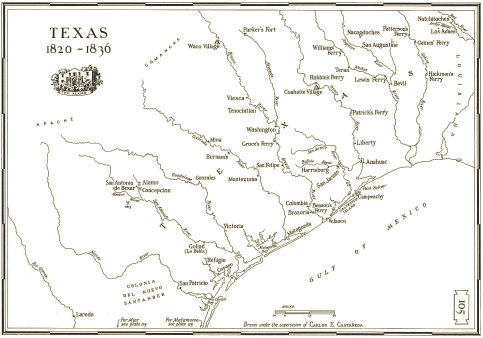
You may have heard the old saying, “Whiskey is for
drinking, but water is for fighting.” This might be especially
true in Texas, where determining who has rights to water
can seem complicated and as murky as the Brazos River
after a heavy rain.
Water rights law in Texas is based on a mix of Spanish law
dating back some 200 years to the colonial period, English
common law and more recent homegrown innovations.
Your rights can vary depending on where you live, when
you applied for those rights, how you plan to use the water
and other factors. This may not be an issue for you if all
your water comes through a tap and is purchased from your
local utility or water supply organization. But if you require
larger amounts of water for your ranch, farm, business,
community or many other uses, here’s a primer on water
rights.
Water rights law differs depending whether you want access to surface water, including some special cases, or
if you want to use groundwater.

Surface water
Overall, surface water in Texas is owned by the
state, for use by residents. If you want to use
surface water, in most cases you must apply for
approval from the state. The agency tasked with
overseeing water rights is the Texas Commission
on Environmental Quality (TCEQ). To learn more
about applying with TCEQ for water, please click
here to go to the agency’s Website.
The Brazos River Authority long ago obtained
permits for surface water and participated in
reservoir construction within the Brazos River basin.
The Authority contracts with individuals,
municipalities, industry, and others to use this
water. If you would like to learn more about
Authority water contracts, please click
here.
Water rights define the terms and conditions under
which water may be used. They can be rights to
impound water, meaning store it in a reservoir, or rights to divert water from a river at an established location.
Long term rights can be bought, sold or leased.
Generally, perpetual surface water rights are based on the date they were established. That “priority date”
determines your place in line to use the water. Normally, priority dates have little effect on the ability to obtain
water; however, during drought and other periods of shortage, one’s priority date becomes very important. The
rights do not guarantee water will always be available.
For instance, during times of drought a permit holder downriver with an earlier priority date, known as a senior
right, can insist that their rights are fulfilled. During such times, all water right holders with priority dates more
recent (junior) than the senior right holder cannot use
water under their rights until the needs of the senior
right holder are met.

Special cases
Among the things the Spanish colonials and later
English common law brought to Texas was the riparian
doctrine. Under this concept, property owners have a
right to draw water from a stream or water body that
crosses or borders their land. They are allowed to take
water for a reasonable use and are protected against
unreasonable use by others. These rights allow only for
smaller-scale use on the property, such as irrigation,
and the water is not to be transferred to land that is not
adjacent to the stream.
The Republic of Texas adopted the riparian doctrine in
the mid-1800s, though within a few decades the Texas
state legislature endorsed a competing system where people could appropriate water rights from the state,
much like our current permitting system. These competing approaches coexisted for more than 100 years,
until they were combined into one system.
Today the vestiges of riparian doctrine can be seen in some exceptions to
the priority date system for domestic or livestock use. Those living along a
river or stream do not need a permit to draw water for livestock, garden or
yard and other domestic uses. This does not include livestock or
gardening for commercial purposes, which do require a permit from the
state. Additionally, impoundments for domestic and livestock use that hold
less than 200 acre-feet of water are exempt from permitting requirements.
An acre-foot is enough water to cover one acre of land with one foot of
water. It equals 325,851 gallons.

Texas law also has established exemptions for emergency and wildlife
management uses. All of these exempt uses come first even before those
with senior priority dates.
Groundwater
Texas treatment of groundwater rights has its roots in English common law
in a doctrine known as the “rule of capture.” This policy mostly gave
landowners a free hand in use of water beneath their property. A
landowner could draw as much water as wanted, with little consideration of
other groundwater users, as long as the water isn’t purposefully wasted
and the withdrawal doesn’t cause subsidence, or sinking, of nearby land.
However, additional controls were placed on groundwater use in the late 1940s when the Texas Legislature
authorized the creation of groundwater conservation districts. These locally governed entities have limited
power over groundwater, primarily in the spacing of wells, education and planning, prohibiting waste and
permitting well drilling. Texas Senate Bill 1, passed in 1997, labeled these districts as the preferred way of
managing Texas groundwater.
According to the Texas Water Development Board, as of 2011, Texas has 96 groundwater districts approved
by voters and one waiting for a vote. To learn more about groundwater conservation districts and whether you
are within one, please click
here.
As Texas population continues to grow, access to the state’s finite amount of water will become more and
more critical. Understanding your rights is a good first step to knowing how you can get access to water when
you need it.